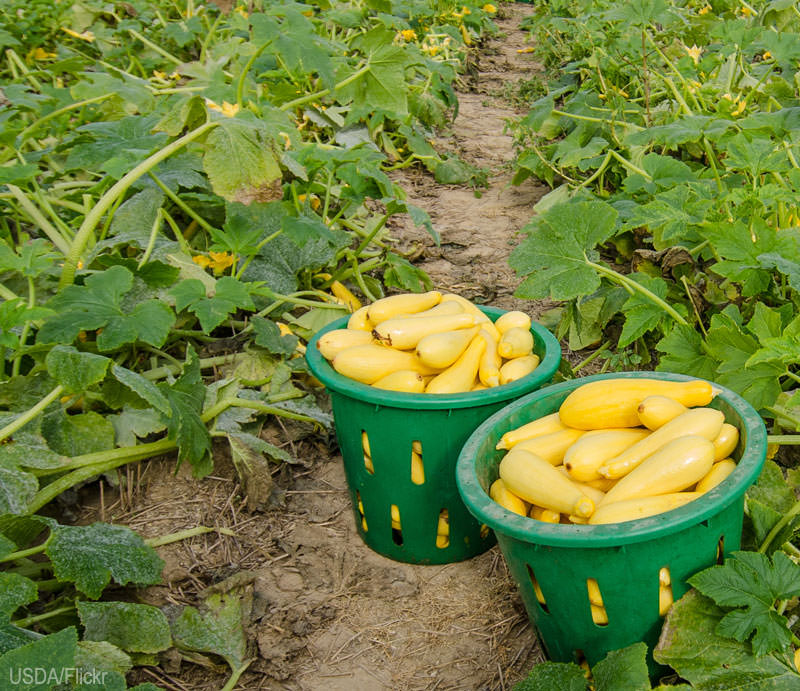
As we enter the crazy-busy summer farm season, it’s so easy to just focus on getting something done that we jump in without strategic planning. We see that row of tomato plants, weighed down with ruby gems, and start harvesting like mad. But if you pick with a plan, taking the time to understand and think through what you want to accomplish, you will harvest a triple-win in the field: better-quality produce, improved use of your time and less stress on yourself.
“If you’re looking to move from home gardener to a legitimate farm business selling at a local farmers’ market, the harvest process is especially something to take seriously and approach professionally,” says Atina Diffley, a national expert on organic farming and author of Turn Here Sweet Corn: Organic Farming Works (University of Minnesota Press, 2012). “Don’t underestimate the importance of understanding the harvesting process. You can grow the most beautiful salad greens, but if you can’t harvest them in a way that ensures your customers enjoy them fresh and safely in their home kitchens, your business won’t succeed long-term.”
Harvesting and related food-safety procedures need to be an integral part of your farm plan, and one that you’re always improving on. Here are some tips and perspectives to get you started.
1. Develop a Harvest Schedule
“Think before you pick anything and determine what types of produce need to be picked at certain times of the day and plan accordingly,” recommends Diffley, who also serves as co-author and lead trainer behind “Wholesale Success: A Farmer’s Guide to Food Safety, Selling, Postharvest Handling, and Packing Produce,” a resource developed by FamilyFarmed.org to support farmers in the harvesting process. “Deciding what to harvest when is determined by each crop’s respiration rate. Respiration refers to the amount of carbon dioxide the crop gives off and how fast the sugars and starches break down and cause water and heat loss.”
Crops with high respiration rates break down quickly and need to be harvested and cooled first, as they are most vulnerable. For example, broccoli, asparagus and sweet corn have high respiration rates and should be harvested early in the day, while otatoes, watermelons, tomatoes and peppers have low respiration rates and can readily be harvested later. Wholesale Success offers a chart of different produce’s respiration rates to help guide your harvest plan.
“Planting a diversity of produce and a mix of crops helps support a manageable harvest plan as you can spread out your work based on these respiration rates,” Diffley adds. “Remember not everything needs to come in at once.”

2. Cool Quickly
Cool your harvest to the appropriate temperature to ensure optimum shelf life. This can be done through various methods, including chilling in cold water (aka hydrocooling).
“Don’t assume that all produce needs to cool to 32 degrees,” Diffley says. “Some crops are chill-sensitive and shouldn’t reach that cold a temperature. Cucumbers, for example, should be kept at 50 to 55 degrees.”
If you over-chill a crop, the damage might not show up until a few days later, once your customer uses that item in his or her home, quickly earning you a bad reputation at the farmers’ market. On the Minnesota Institute of Sustainable Agriculture website, you can find several free downloadable chapters of the Wholesale Success guide, including the chapter on “Cooling and Curing” with more detail on this topic.
3. Find Shade
“Get your harvest out of the sun and in the shade as quickly as possible,” says Harriet Behar, organic specialist with the Midwest Organic and Sustainable Education Service. “This can be a challenge when you’re out in the field, but remember shade is good for both your crop quality and your own health, too.”
One way to create shade is by building a mobile shade structure that you can use in the field. Sandhill Family Farms in Grayslake, Ill., and Brodhead, Wis., rigged up several shade structures that they navigate directly into the field for harvest.
“We used an old snowmobile trailer and transformed it into what we call our ‘harvest wagon,’ building a canopy frame over the top which we enclose with a heavy grade tarp,” says Peg Sheaffer, co-owner of Sandhill Family Farms. “This works really well to provide shade in the field while harvesting. We also use a golf cart that already has a canopy on top. We can drive this directly into the field to harvest lighter crops, like greens.”
4. Prioritize Food SafetyBy implementing a harvest plan, you’ve already given thought to food safety, but you can always go a step further.”Bringing fresh, tasty produce to market that is safe is the ultimate priority,” Diffley says.First and foremost, always practice good sanitation by thoroughly washing your hands often, especially before cooling produce in water.”While water can be a great way to cool produce, it must be approached and used with caution, as water can serve as a carrier for various food-borne pathogens, bacteria or a virus that can cause disease,” Diffley says.It’s also important to develop a produce-washing plan that rinses and cleans off soil, where most pathogens imbibe. Diffley recommends adding a sanitizer to the water to help prevent transfer of pathogens from one produce item to another and to reduce the potential risk of produce imbibing food-borne pathogens. Sanidate, produced by Ecolab, is a hydrogen-peroxide-based product approved for certified-organic growers.Developing a harvesting plan that keeps safety in mind is an ongoing process. Take the information you learned here and build on it with resources from extensions and other knowledgeable sources.





